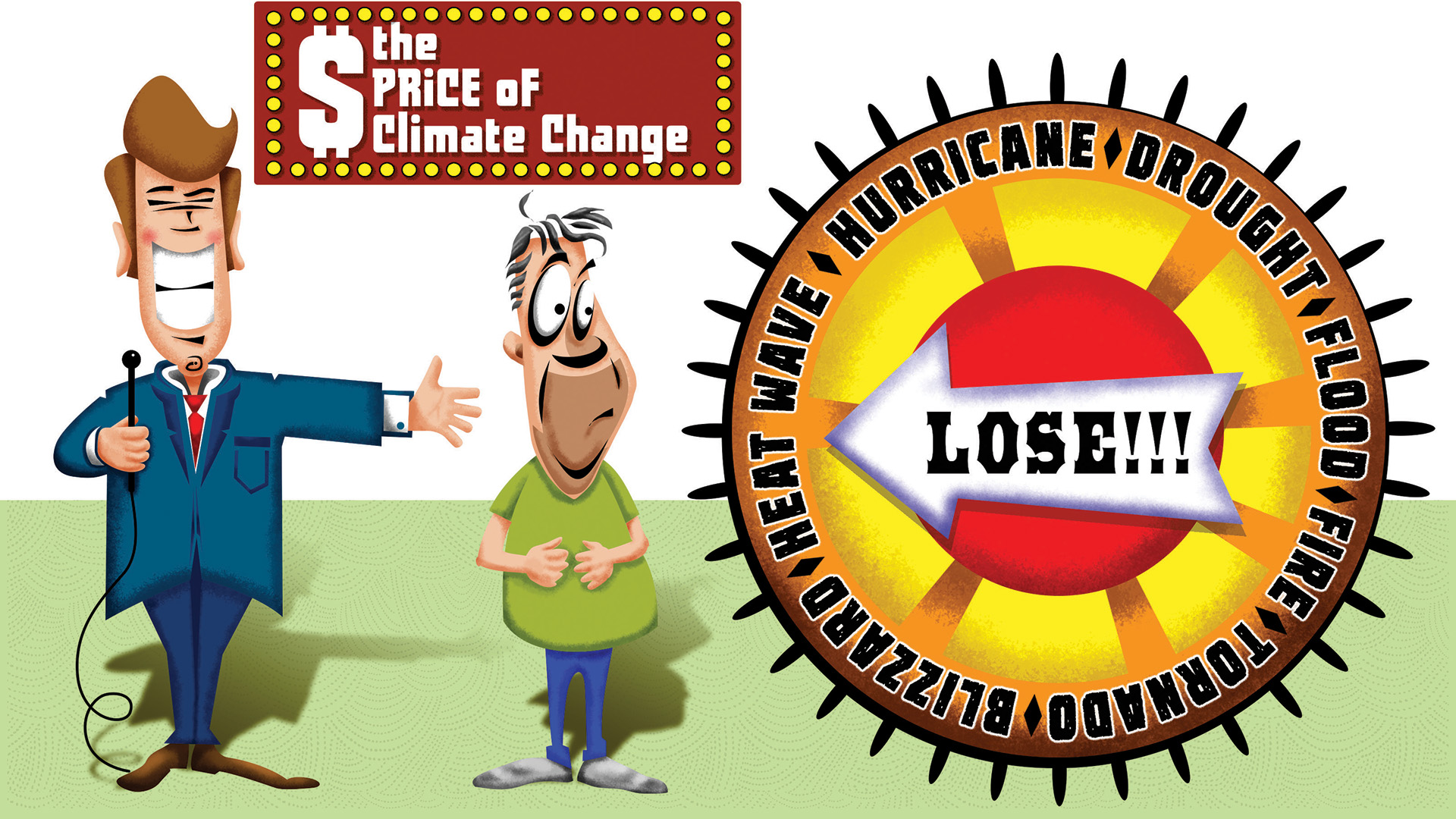 Don Fullerton, Ph.D.
Don Fullerton, Ph.D.
Gutgsell professor of finance at Gies College of Business, University of Illinois Urbana-Champaign
Welcome back to Peoria Magazine’s Econ Corner, a recurring feature in which we pose questions to experts about various economic issues and how they affect our lives and careers here in central Illinois.
Doing this month’s Q&A is Don Fullerton, Ph.D., an economist at the University of Illinois Urbana-Champaign. He also is associate academic director at the Center for Professional Responsibility in Business and Society.
Peoria Magazine (PM): As you assess the economic costs of global warming and climate change, how do you weigh the price tag on policy intervention – through carbon taxes, government subsidies for alternative energies, etc. — vs. the financial impact of doing nothing?
Don Fullerton (DF): The cost of all damages to the worldwide economy from one ton of carbon emissions today — aka, the “social cost of carbon” — is over $50 per ton, but many economists believe it should be updated to more than $100/ton.
Some projects have costs that are negative, which means they ought to be done anyway to save money, not counting climate benefits. For example, many households could save energy costs by switching to LED lighting, better insulation and other kinds of weatherization.
Beyond those “win-win” opportunities are other low-cost ways to reduce carbon emissions, such as installing more wind turbines or solar panels. But other kinds of emission reduction programs are quite expensive. Research might be worthwhile for new technologies like biodiesel or “carbon capture and storage,” but some estimates of the costs of those technologies are over $100 per ton of carbon emission reduction.
The most efficient choices are possible with a policy of “carbon pricing” such as a cap-and-trade program with a price of $50 for a permit to emit one ton of carbon, or a carbon tax of $50 per ton of carbon emissions. Then every household or business could decide for themselves whether and how to cut emissions. When carbon policy raises the price of coal-fired electricity, households with sunny rooftops could save money with solar panels, and farms with enough wind can get a higher return from building wind turbines. Electric utilities can avoid high-carbon coal and use more low-carbon natural gas or zero-carbon technologies to avoid paying the carbon price by whatever means are cheapest for them.
PM: Given the real and potential consequences associated with climate change – the property damage caused by extreme weather events, land loss through sea level rise, the disappearance of various species, the increase in certain diseases due to higher temperatures, the repercussions for agriculture, etc. — is there any argument, economic or otherwise, for sitting back and just letting things happen?
DF: The main problem with sitting back and doing nothing is the huge uncertainty about what could happen with more greenhouse gas emissions and temperature increases that would eventually exceed several degrees Fahrenheit. We would face uncharted territory because we really don’t know how much and where those hotter temperatures will create droughts, ruin crops, kill people directly from heat stroke, and increase wildfires that destroy homes.
The world has not yet experienced the hotter air that holds more moisture and thus can create bigger storms that hit without warning in new locations, causing more damage from storm surge that floods more homes and drowns more people.
In other words, the cost of climate policy to reduce greenhouse gas emissions is a way to buy insurance! It is a way to pay to reduce those unknown risks … about whose homes will be ruined and whose lives will be lost.
PM: We’ve seen various economic models projecting drops in GDP in relation to various temperature increases, some more dramatic than others. Is there any consensus on the economic modeling that does exist? If so, what does it show?
DF: The fact that various economic models make widely varying predictions about economic losses really just reflects the point above about the uncertainty. Do you want to rely on any one model that shows small losses when others show huge losses?
Nonetheless, refinements in those models are proceeding to reduce the large variance of their predictions. Economists will never totally agree, but they are not disagreeing about the fact that human-caused climate change will have huge damages. They only disagree on how huge.
Moreover, the costs of climate change are not well measured by the drop in GDP. First, many of the damages from climate change do not affect income measures like GDP. Examples are losses in biodiversity, the disappearance of wetlands like the Florida Everglades, and land lost to sea level rise. Ruined homes and lost land are reductions in wealth and are not counted as reductions to income.
Second, that lost wealth can itself lead to increases in GDP, like when money is spent to hire workers to build higher levees or to rebuild houses that were ruined by flood or by wildfire. That increase to GDP is a cost of climate change!
PM: What can Americans be doing individually to prepare for and cushion the economic impacts of climate change?
DF: Well, you might be wise to move out of your house if it has increasing probability of flooding or if it is in a mountain canyon that burns more frequently. But moving now will not prevent financial losses. The word is out, so buyers in the housing market already know which properties are more likely to flood or to burn. The market prices for those houses already have fallen. The owners of those houses have already lost wealth, even when their houses have not yet flooded or burned.
In the future, if a house is flooded and insurance pays to rebuild it, then a new house can be built on stilts to avoid future flood damage. In areas prone to wildfires, homeowners can cut down all the trees around their homes for better protection from forest fire. People at risk of heat stroke need to buy air conditioners and stay indoors on the hottest days or find local community centers that are air conditioned …
Many farmers have considerable expertise about what crops grow best under different conditions, so they can change crops. They need to prepare for a future world with more rain in the spring that might wash away seeds and with less rain in summer when it’s needed. Cities need to look ahead to frequent major rainstorms by starting now to rebuild and enlarge underground storm drains. Towns along streams and rivers need to consider removing buildings that are too close to the river’s floodplain.
PM: Okay, so benefits from reducing climate damages are larger than the costs of reducing carbon emissions, providing a net gain from climate policy. Does everybody share in that gain?
DF: Unfortunately, it’s not that simple. Coal-fired electricity generation is very cheap. Almost any policy to reduce carbon emissions will require shifts away from coal to more expensive forms of renewable energy like wind and solar power. That shift will increase the price of electricity and other goods that constitute a relatively high fraction of spending for low-income households, imposing a burden.
Climate policy could also cause unemployment, for example, among those who build gasoline-powered vehicles, unless the climate policy package includes measures to help fix those adverse distributional effects.
This problem is another good reason to favor a carbon tax, which can encourage cheap ways to reduce carbon emissions while also providing government revenue to help those who bear the highest costs of that policy. Government can help low-income households with higher costs of electricity and gasoline, ease the transition for coal miners and other workers who need retraining to work elsewhere, and help cover the costs of moving families to new locations for new jobs.
PM: Is there a way for the United States to move forward in trying to influence global warming without putting us at a competitive disadvantage relative to other nations that are unable or unwilling to take much action? If so, how so?
DF: Any countries that move unilaterally to reduce global warming would undoubtedly bear extra costs that put them at a competitive disadvantage. That’s why so few countries have enacted strict climate laws. That’s also why we need multilateral coordination.
Let’s suppose that one ton of carbon dioxide emitted anywhere in the world imposes $10 of damages upon each of 10 large countries. In other words, the worldwide social cost of carbon is hypothetically $100 per ton. Each one of those countries separately has no incentive to spend more than $10 per ton of emission reduction because it only gets $10 of benefits. That effort is too small, however, because we all forgo efforts that cost $20 per ton or $30 per ton, even when those low-cost projects would have benefits of $100 per ton.
But all 10 nations would gain from a worldwide agreement to go much further, up to a cost of $90 per ton or more for worldwide benefits of $100 per ton. Another way to say it is that each country could agree to cover 10% of any project that costs up to $90 per ton of emissions, because each country would get 10% of the $100 worldwide benefits.
We absolutely need a worldwide agreement. Efforts at negotiation are underway but have not been very successful. Each country wants other countries to pay the costs, even though every country shares in the benefits. Maybe, as climate change gets worse — droughts that devastate harvests worldwide, floods that destroy billions of dollars of property — nations will begin to get on board for some serious reductions in worldwide emissions.





